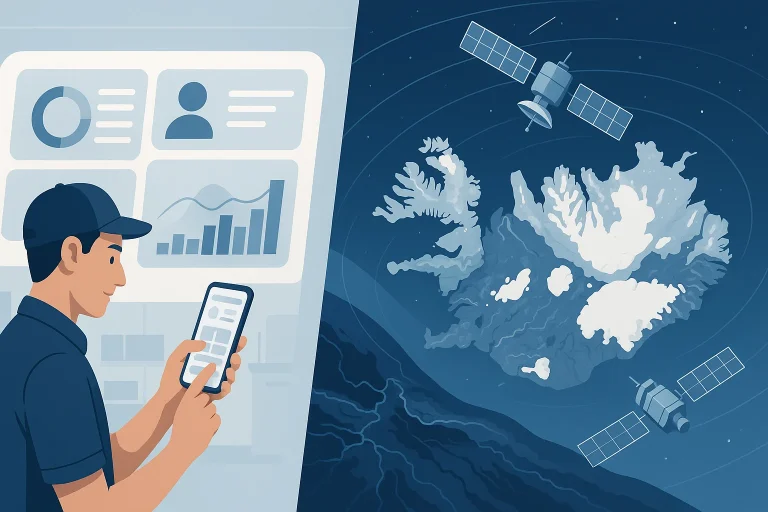Are you running a startup and wondering why your tax bill seems higher than expected? Have you received an HMRC statement with unexpected interest added or credited?
Whether you’re a founder managing your own books or a growing business working with an accountant, understanding how HMRC interest rates work is essential. Between 2020 and 2025, these rates changed frequently, reflecting wider economic shifts including COVID-19 recovery and inflation.
In this guide, we break down how HMRC sets its interest rates, why these changes matter, and how they’ve evolved over the past five years. If you’re aiming to keep your tax liabilities in check and avoid costly mistakes, this overview is for you.
How Are HMRC Interest Rates Determined?

HMRC interest rates are linked directly to the Bank of England base rate. The government sets these rates in legislation, meaning they follow a structured policy rather than being adjusted arbitrarily. There are two core interest rates that businesses need to be aware of:
- Late payment interest: Charged when tax is paid after the due date. From 6 April 2025, this is set at the base rate plus 4%. Before that date, it was base rate plus 2.5%.
- Repayment interest: Paid by HMRC when a taxpayer overpays and is due a refund. This is set at base rate minus 1%, but with a safeguard minimum of 0.5%, even if the base rate falls lower.
This approach ensures both fairness and financial responsibility. Businesses are discouraged from delaying payments due to the higher late interest, while those who pay early or are due a refund are compensated, albeit modestly.
Why Are Repayment and Late Payment Rates Not the Same?
You might be wondering why HMRC doesn’t pay as much interest on refunds as it charges for late payments. This is a deliberate policy choice, aligned with global tax authority practices. Tax authorities, like lenders, apply a higher rate for money owed than they offer on repayments.
From a startup’s perspective, this matters because if you overpay or file early, the repayment interest won’t offset the burden of overestimating. But if you’re late, the additional interest on your tax bill can quickly add up. This is designed to reward timely compliance while maintaining balance in the public finances.
How Have Interest Rates Changed from 2020 to 2025?
Over the past five years, HMRC interest rates have risen significantly especially from 2022 onwards as the Bank of England responded to inflation. In early 2020, the late payment interest was below 3%. By mid-2025, it had risen to 8.25%.
The following table shows key rate changes for late payment and repayment interest across major taxes such as Income Tax, Corporation Tax, VAT, and National Insurance:
HMRC Interest Rates (2020–2025)
| Effective Date | Late Payment Rate | Repayment Rate |
| 28 May 2025 | 8.25% | 3.25% |
| 6 April 2025 | 8.50% | 3.50% |
| 25 February 2025 | 7.00% | 3.50% |
| 26 November 2024 | 7.25% | 3.75% |
| 20 August 2024 | 7.50% | 4.00% |
| 22 August 2023 | 7.75% | 4.25% |
| 11 July 2023 | 7.50% | 4.00% |
| 13 April 2023 | 6.75% | 3.25% |
| 6 January 2023 | 6.00% | 2.50% |
| 22 November 2022 | 5.50% | 2.00% |
| 5 July 2022 | 3.75% | 0.50% |
| 7 April 2020 | 2.60% | 0.50% |
Rates fluctuated throughout this period in response to the Bank of England’s policy decisions. When the base rate dropped to a record low in 2020 during the pandemic, HMRC’s repayment rate hit the 0.5% floor, where it remained until mid-2022. As inflation soared in 2022 and 2023, the base rate increased and so did HMRC’s interest rates.
For more details, visit – Gov.UK
What Is the Impact on Startups and Small Businesses?

If you’re building a business, every percentage point counts. Higher HMRC interest rates translate to real costs when taxes are paid late. An 8.25% annual interest rate on a late £10,000 Corporation Tax payment, for example, results in approximately £68 in interest for just one month of delay.
This can significantly affect startups operating on slim profit margins. Additionally, while repayment interest can provide a small cash benefit when you overpay, it’s unlikely to offer meaningful returns compared to the cost of late payment.
Therefore, tax planning should be proactive. Ensure you:
- Set aside funds for VAT, PAYE, and Corporation Tax in advance
- Track filing deadlines closely
- Speak with an accountant about quarterly instalment forecasting if your profits exceed thresholds
What About Quarterly Instalment Payments?
For larger or growing startups within the quarterly instalment payment regime, there are additional interest considerations. HMRC charges interest on underpaid instalments and pays interest on overpaid or early payments.
As of 19 May 2025:
- Underpayment interest: 6.75%
- Early or overpayment interest: 4.00%
While this gap isn’t as wide as standard tax payments, it still encourages accurate forecasting and timely contributions.
Will These Rates Continue to Rise?
Looking ahead, much depends on the Bank of England’s monetary policy. If inflation persists, we may see continued upward pressure on the base rate and, by extension, HMRC rates. However, repayment interest will only increase when the base rate rises above 1.5%, thanks to the 0.5% floor mechanism.
This makes the current 3.25% repayment rate relatively generous by historical standards. But for late payments, the climb above 8% may be here to stay if economic conditions remain tight.
What Should Founders and Finance Leads Do?

The key takeaway for startups is simple: build tax discipline into your cash flow strategy. Delays in tax payments now come with heavier financial consequences. While the cost may have been marginal during the low-interest era, today’s rates demand precision.
Startups should also ensure their accounting systems are updated in real-time and synced with HMRC deadlines. Using cloud-based software, automated alerts, and accountant oversight is no longer just a nice-to-have it’s essential.
Final Thoughts
Between 2020 and 2025, HMRC interest rates have more than tripled in some cases. For businesses that once relied on flexible tax payment schedules, the cost of delay is now significant. Equally, the modest compensation for overpayments highlights the need for accurate tax forecasting rather than relying on HMRC refunds.
Understanding the interest mechanisms behind HMRC’s system isn’t just for tax professionals. For startup owners, it can be the difference between efficient cash flow and accumulating interest costs.
Stay compliant, stay proactive and if in doubt, seek professional tax guidance.
FAQ
What is HMRC late payment interest?
It’s interest charged when tax is paid after the due date. From 6 April 2025, it’s set at the Bank of England base rate plus 4%.
What is HMRC repayment interest?
It’s interest HMRC pays when you overpay tax. It’s set at base rate minus 1%, with a minimum floor of 0.5%.
Why are the two interest rates different?
The higher late payment rate discourages delays, while the lower repayment rate reflects standard financial practice.
How often do HMRC interest rates change?
They typically change when the Bank of England base rate is adjusted, often within a few weeks.
What are the current HMRC interest rates?
As of 28 May 2025, late payment interest is 8.25% and repayment interest is 3.25%.
Do these rates apply to all taxes?
Yes, they apply to most major taxes, including Income Tax, VAT, Corporation Tax, and more.
Can interest be avoided on late payments?
Interest can’t be avoided if you pay late, but penalties can be reduced by contacting HMRC early and arranging payment plans.




